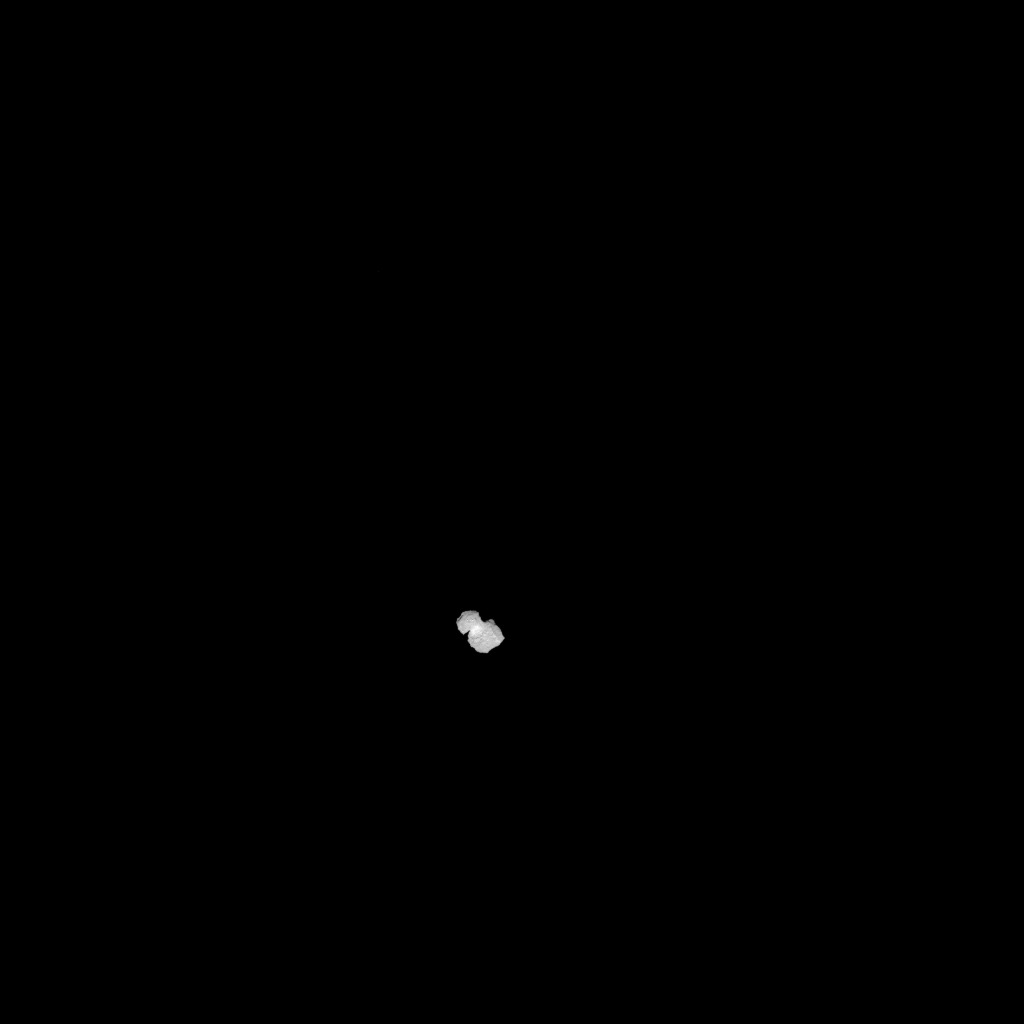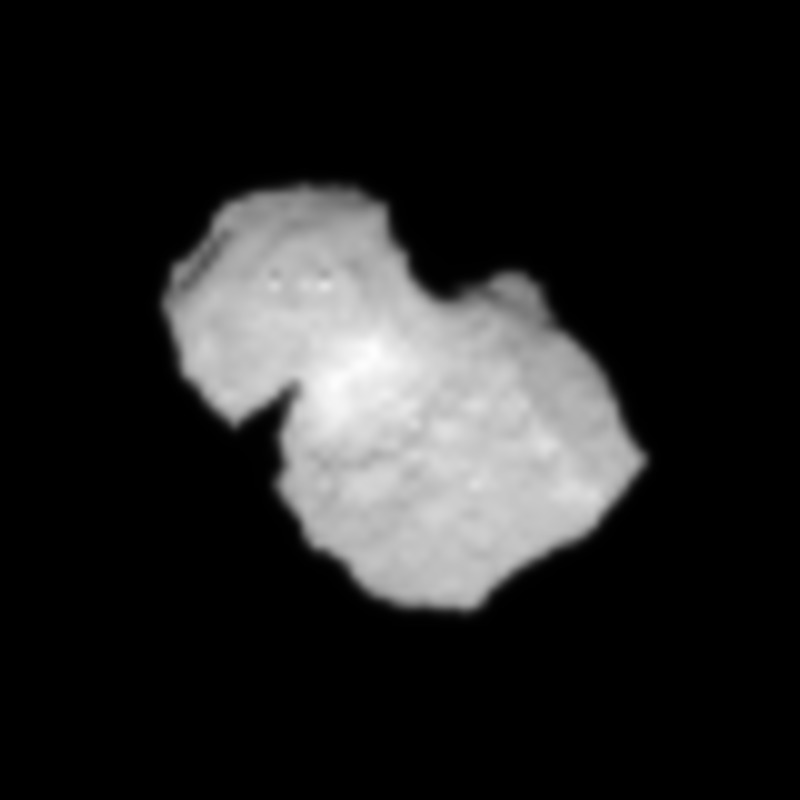Rosetta navigation camera (NAVCAM) image taken on 31 July 2014.

Full-frame NAVCAM image taken on 31 July 2014 from a distance of about 1327 km from comet 67P/Churyumov-Gerasimenko. Credits: ESA/Rosetta/NAVCAM
View and download interpolated image here.










Discussion: 20 comments
? a very tilted view of bottom hamburger.
two dimples/crater on neck of duck, a dark spot/shadow depression on head and dimple with circular dark/shadow surrounding top left
Am I seeing thing or has the duck’s head got two eyes?
Hi Sam,
indeed, the duck is watching to the left.
Thanks again to the team for the new photo!
Ingo
More than just eyes, around the obvious dimples is a regular shape with straight lines, looks like an equilateral triangle with cut corners, and the depression on top has regularly spaced variations that look like the louvers of a vent of some nature. Are we about to discover a cosmic, refrigerated seed pod designed to spread life among the universe?
Naive question. Why are there no stars in the background?
Naive question, why don’t we see stars in the background?
Naive answer – we don’t see stars in the background because the photograph was taken during the daytime.
Indeed: even at the current relatively large distance from the Sun and the relatively dark colour of the comet, it’s bright enough that not saturating the nucleus in NAVCAM means using a short exposure time, too short to see stars (well, unless a very bright one was right along the line of sight to the comet).
Same reason stars don’t appear in the Apollo pictures taken on the surface of the Moon.
But yesterday’s OSIRIS WAC release, with a long exposure to see the faint coma, did show stars, as you’d expect.
The comet is rather bright from Rosetta’s distance, looking at dirty ice in full sunlight, so the stars are too dim to see. If the camera exposure were set for stars, the comet would be an overexposed white blob (or maybe even the camera damaged?)
Please add a distances Rosetta-comet for few next days.
Hi Limax7: These were calculated in advance, so the actual distances will be somewhat different. But, as the series of OCMs was quite accurate, these figures are all also still pretty accurate (click on the link for a text file): LINK
I am wondering why most of the images published here are from the NavCam and not the narrow angle OSIRIS camera which appears to have a much higher resolution as shown in the article on the comets tail (31/7/14) seems to have?
Is there any public event at DLR in Darmstadt next weekend?
There is a press event on Wed 6 August for the arrival of Rosetta at the comet, it will be possible for the public to watch online. Details: https://www.esa.int/Our_Activities/Space_Science/Rosetta/Call_for_Media_Rosetta_s_comet_rendezvous
Ask the OSIRIS team… Don’t forget ESA’s policy: “As with OSIRIS, we plan to share more NAVCAM images with you as we get closer to the comet. Because NAVCAM and the OSIRIS wide-angle camera have comparable resolution, we have an agreement with the OSIRIS team to try and avoid publishing too much NAVCAM data immediately, as they could be used to yield science data similar to that coming from OSIRIS. All Rosetta science instrument data have a proprietary period of 6 months, after which they will be publicly available in our archives, and thus all NAVCAM data will also be available no later than that.”
BTW, nobody seeing “double” (that is to say two chunks more or less attached) saw some similarity with comet Hartley 2 or asteroid Itokawa already visited by space probes? 😉 Interesting investigation to come.
Great; a Komet with two eyes, well, he is looking to Rosetta !!!!
Some of these ‘features’ are likely imaging artefacts; as the next week unfolds we will finally see what is *really* there!
Will the comet survive intact at perihelion? It would seem that tidal forces might break it apart.
The comet has survived many trips around the Sun already on its short, 6.5 year orbit. Perihelion distance is 185 million km, which puts it between the orbits of Earth and Mars. The orbital history of the comet is described in more detail here: https://sci.esa.int/rosetta/14615-comet-67p/
Wonderfull! Possibly a souce (top on the left) of one of the three main gets of the comet is visible.
An OSIRIS-NAC picture taken at the same distance should be astonishing. When it will be avaiable ?
In any case, thanks a lot for your effort to give some
usefull information to the public and Media.
As a consequence, also the (normaly low) interest of Italian Media is increasing…